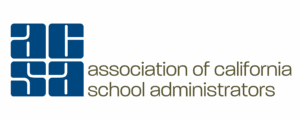When it comes to negotiations, the three most important concepts are relationships, relationships and relationships

By Denise Gail Saddler
The financial and fiscal challenges in school districts are not new and continue to be even more robust as the needs of students and families grow. Districts in California are often positioned in intense negotiations with many different stakeholders, including teacher unions, central office/support staff, administration and the community at large. While maintaining the mission and vision of the board of education, it is essential that those involved with negotiations ensure a collaborative fair process that prioritizes the best interests of both parties.
This writing looks at critical and essential knowledge and actions that school negotiation teams should implement for productive and successful bargaining.
At ground zero, all stakeholders should work to establish working relationships to build trust and establish common language. An effective way to approach this is to start early before contracts end. At least two years prior, potential negotiation team members can begin this process by establishing committees to study and look at issues that need to be addressed from the perspective of all stakeholders. For example, the teams might look at retention of employees. Instead of anecdotal examples of why people leave positions, both teams can look at data and even participate in exit interviews to get a grasp of the underlying issues and come up with ways to address these specific needs through negotiations or by updating current contract language. While taking on real-time critical issues, teams will develop relationships as well as a better understanding of the challenges and consequences of current practice.
Along with relationship building, the teams need to learn key information about collective bargaining and their responsibilities as a member of a bargaining team.
Collective bargaining is a process defined under the Educational Employment Relations Act (EERA) in California. Negotiation teams must know the legal framework for bargaining. Most often, teams on both sides of the table (union and administration) leave everything to the lead negotiators on both sides. On the administration/board side of the table, one might see a labor relations attorney from a legal firm working alongside the district’s general counsel. On the union side you might find a union bargaining staff person working with a team of union members. It is important that all members of the team understand the process in order to be effective and ensure fair and fruitful outcomes. Knowledge of the process — legally and technically — will advance better results.
Priority knowledge
Good faith bargaining: Both sides of the table or both parties must enter into negotiations with integrity and an authentic desire to reach agreement. In order to get there, teams must be open, present clear positions and be willing to compromise. This is critical in any relationship.
Standard mandatory subjects of bargaining: The basics include hours of work, salary, conditions of employment and other key areas. Bargaining teams must get clear on what is negotiable and what is outside the scope of negotiations. This must be established prior to the negotiations process. It is also important to share what is “in scope” and “out of scope” with all stakeholders to not get distracted by aspirations of different stakeholders, which may be valid but not appropriate for a collective bargaining agreement.
Impasse procedures: Team members need to be up to date on the process for resolving a deadlock or no movement in negotiations. This can often be addressed by bringing in an outside mediator or fact finder. Teams must understand these options and work to stay away from a blame game, which is unproductive and actually hinders movement toward agreement.
Best practices

Training: Administrators, school leaders and union members are many times thrust into negotiations without formal training due to competing demands. They are often very knowledgeable about their content area of service, yet not knowledgeable of negotiation strategies and required collective bargaining processes.
Several years ago while serving as a member of a teachers’ bargaining team, we participated in a bargaining institute conducted by UC Berkeley. It was effective because both sides of the table participated, including the president of the school board. It is my opinion and belief that this opportunity to develop relationships prior to negotiations and exposure to the negotiations process, legal requirements and more had a profound impact on positive negotiations and labor peace for the next six years.
Legal counsel: The negotiation teams should have access to an expert legal counsel that provides legal guidance relative to collective bargaining language and education law. It is critical to have someone who can review language and advise on whether it meets current state and federal legislation and even the legislation of the board of education.
Communication: Internal and external communications prior to and during negotiations are non-negotiable. Transparent communication channels should be maintained to create and build trust. Poor communications can hamper negotiations and fuel mistrust. Good communication can advance an environment of transparency and good faith. Without good communication, stakeholders will communicate their distrust in a big way and take the process off track. Oftentimes, organizations on both sides of the table wait until the process heats up, and that is too late to start communicating. Everything should be shared in communications — the advance work, training and goals. All stakeholders need to know they were heard relative to priorities and concerns.
Team alignment: Negotiation teams must be chosen very carefully in that they must be collaborative, skilled, good communicators and, most importantly, aligned with priorities and goals. Pre-meetings and training are essential to create internal trust on the teams as well as a focused approach toward goals. These pre-meetings aid in cultivating an environment where critical information relative to negotiation topics, fiscal issues, current budgets, timelines and stakeholder perspectives can be shared.
Vehicles for feedback: Multiple perspectives should be collected through various means of feedback. It is important to hear from other voices who are not at the table, such as principals, school site council chairs and PTAs Issues may not be negotiable, but they are related to the process. These listening opportunities can also inform key negotiations in a positive manner and can be destructive to negotiations if not taken into account.
Regular communication: Stakeholder contact is essential. It advances transparency. Celebrate everything, including the selection of the team members, training completion, and partners who support the education process and take the pressure off of the budget. Provide updates on the progress of negotiation sessions, whether its is minor or major progress. Open and transparent communication decreases misinformation and the optics that something is being hidden.
Stakeholder engagement: Stakeholders must be engaged early in the process. This is a major part of negotiations. In so many areas of California, school districts are experiencing acute financial challenges and may have to take several steps to address them, including school closures, reduction in staff and beyond. Stakeholders need to understand the “why”: Is it low enrollment? Poor management of funds? Sunsetting of ESSER (COVID support) funds? They also need to understand the need to maintain quality teachers, administrators and support staff, while at the same time acknowledgingthat staff is experiencing a high cost of living in California.
These dilemmas must be shared openly and in a manner that supports collaborative solutions. Many of these issues can be addressed by relationships with outside partners. For example, Stephen and Ayesha Curry’s foundation supports the refurbishing of playgrounds in Oakland schools, a major literacy program and more.
Community meetings: Community meetings should be arranged to provide spaces where stakeholders can share and reflect on their thoughts and experiences on a wide range of topics. The meetings should prioritize student voice. Students who are 18 can vote for school board members. In some districts/cities (Oakland and Berkeley), 16- and 17-year-olds can also vote for school board members. Students are the clients and should be heard. To that end they should also participate in training so they get a sense of school finance, district obligations, staff obligations and beyond. Building a sense of community is important toward engendering trust and relationships.
Trust: Building trust and an openness around discussing concerns and issues is a critical role for negotiations teams and those who support them. It is important for negotiations teams to have a presence within the community they serve. Listening is so critical for all involved. Being heard and seeing their thoughts in writing will have a positive impact, planting the roots of a climate based on trust, respect and sincerity. Recognition of the roles everyone plays in this process helps to ensure a respectful relationship as team members work through challenges. Remember, negotiations is a process to accomplish goals, but is not a mandate. It is complex and everyone has to put in the energy and time to resolve issues and find agreement.
Disagreement and conflict: Even when properly supported with training and knowledge, teams and team members can sometimes disagree. It is important to talk about how to resolve differences at the beginning of the process. Teams may choose to disagree, but do so without negativity and confrontation. There should be a consistent approach to finding agreement and compromise when needed — collaborative dialogue is a must. Being open to an outside mediator or counsel can also assist in diluting some of the stances and issues put forward.
Potential strikes: Leaders need to prepare in case there are threats of a strike or if a strike is called during the collective bargaining process. I must share at this juncture, having been in several strikes on both sides of the table, my opinion is that when a strike is called, that indicates that the negotiations process has failed. We must avoid this step and be mindful and even evaluate how organizations end up in this position.
The big goal is to reach agreement and have labor peace. In spite of that goal, there must be preparation to address the potential of a strike. Even though preparing for a potential strike is much more involved, I would liken the preparation to a teacher providing substitute plans in case they are out. Highly skilled teachers have a plan that includes basic information on the students and core direction and materials that would provide a quality experience for their students in their absence.
There is much to have in place when preparing for a strike: What happens to special ed students, grades, graduations, promotions and statewide testing? How will the district handle the fiscal impact, hiring of subs for teachers on strike, loss of ADA, community support, safety, other bargaining units and their potential support, nutrition, communication to parents, translation teams, and much more? We must always have a plan that doesn’t harm our students. How will staff who are not on strike be managed and supported? We must plan in advance and must take all of the necessary measures to keep schools open so that students are served.
It is so important that all stakeholders and negotiating teams allow for new ways, new thinking, creativity and maintain their resolve to not position themselves toward a failed process, a strike.
Conclusion
In this era of limited funds and more needs, it is important to have all leaders armed with practices and approaches that ensure a successful agreement.
This will take a true commitment and understanding of the bargaining process, and willingness to ensure fairness and collaboration.
If leaders stay open, listen, and maintain their commitment to quality education, keeping in mind who we serve — students and their families — we can reach an agreement that both sides of the table and the community at large can be proud of, even with the challenge of finances.
Relationships are critical, no matter how challenging the conditions are. Relationships nurture our well being when dealing with crisis moments while helping us navigate challenging times.
Denise Gail Saddler, Ed.D., is currently serving as a lecturer in the Leaders for Equity and Democracy (LEAD) Doctoral Program in Education at the Berkeley School of Education, UC Berkeley and as an executive coach for principals. She has also served as the president of the Oakland Education Association/CTA/NEA and an education liaison for the former mayor of Oakland, Elihu Harris.


































